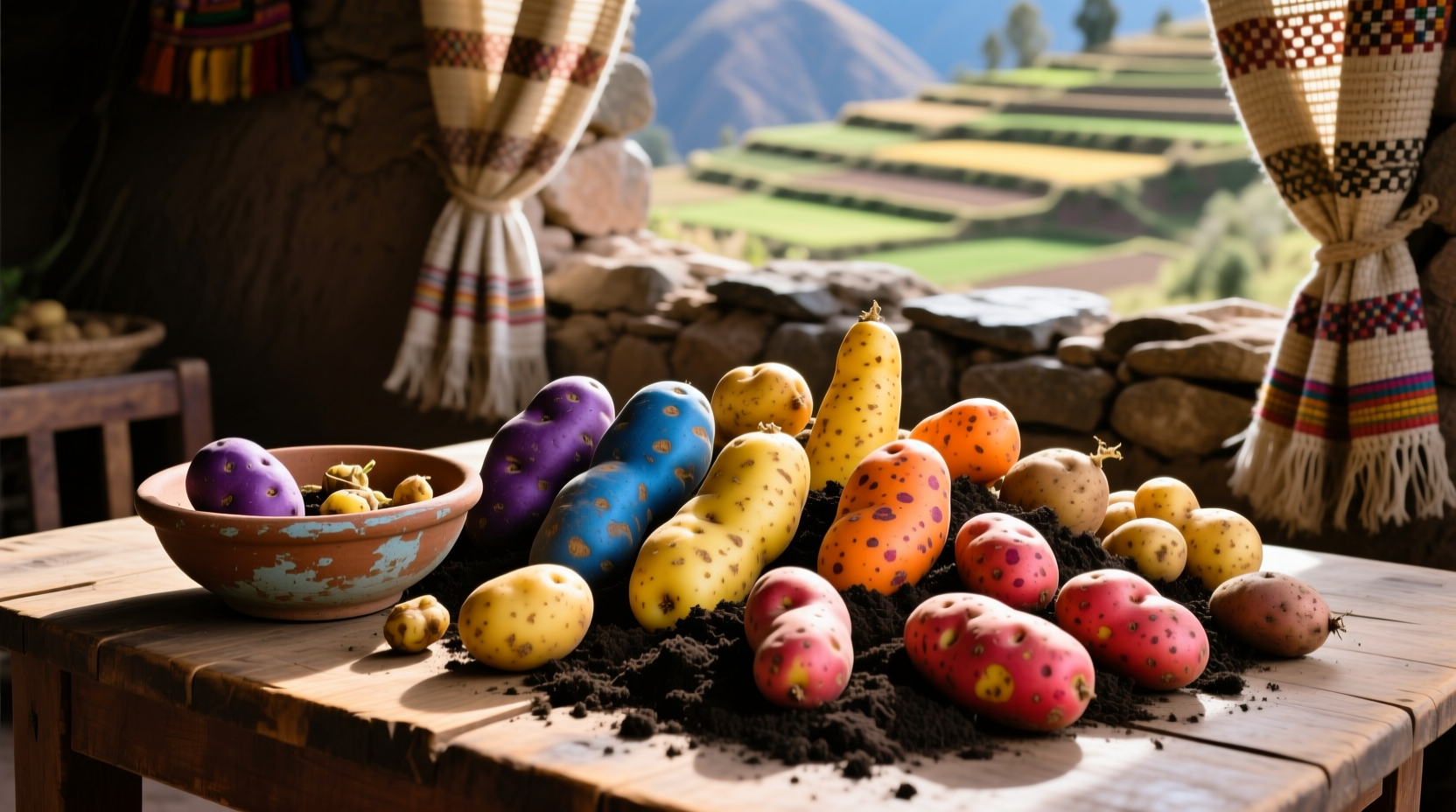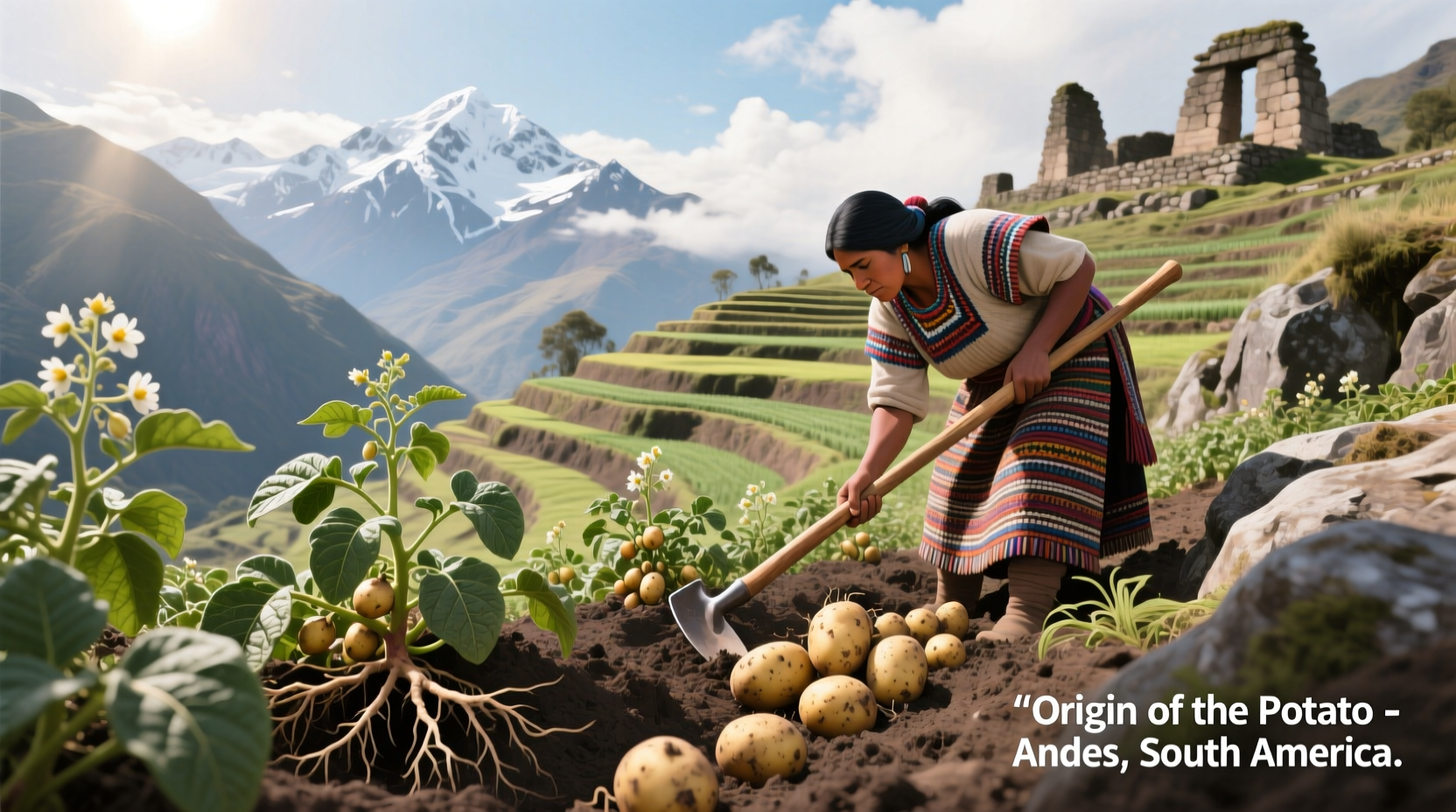Unlocking the Ancient Origins of a Global Staple
When you bite into a potato today, you're connecting with one of humanity's oldest cultivated crops. Understanding where potatoes originated isn't just academic—it reveals how this humble tuber transformed global agriculture, prevented famines, and became the world's fourth-largest food crop. This comprehensive exploration delivers verified historical facts, archaeological evidence, and practical insights about potato origins you can actually use when selecting varieties today.
The Andean Birthplace: Where Potato Originated
Scientific consensus confirms potatoes originated in the high-altitude regions of the Andes, specifically in what is now southern Peru and northwestern Bolivia. Researchers from the International Potato Center (CIP) have traced potato domestication to the area surrounding Lake Titicaca, where ancient indigenous communities first cultivated wild potato species between 7,000 and 10,000 years ago.
Unlike today's uniform supermarket varieties, early potatoes displayed astonishing diversity in color, shape, and size. The Andean people developed sophisticated agricultural techniques to grow potatoes at elevations up to 14,000 feet, creating freeze-dried preservation methods (chuño) that allowed storage for years. This agricultural innovation supported the development of complex civilizations throughout the region.
| Evidence Type | Location | Time Period | Significance |
|---|---|---|---|
| Archaeological remains | South-central Peru | Approx. 2,800 BCE | Oldest known potato remnants found at the coastal site of Huaca Prieta |
| Genetic analysis | Andean highlands | 8,000-10,000 years ago | Confirms domestication from wild Solanum species in the Titicaca basin |
| Historical records | Inca Empire territories | 1400-1530 CE | Incas cultivated over 3,000 potato varieties across ecological zones |
Timeline of Potato Domestication and Global Spread
The journey from Andean staple to worldwide crop followed a precise historical trajectory:
- 8,000-10,000 years ago: Indigenous peoples in the Andes begin domesticating wild potato species
- 2,800 BCE: Earliest archaeological evidence of potato consumption found at Huaca Prieta
- 1400-1530 CE: Incas cultivate diverse potato varieties across their empire using advanced agricultural techniques
- 1530s: Spanish conquistadors encounter potatoes in Peru and bring them to Europe
- 1570s: Potatoes introduced to Spain and begin spreading across Europe
- 1700s: Potatoes become staple crop across Europe, credited with reducing famine
- 1845-1852: Irish Potato Famine demonstrates global dependence on this single crop
- Today: Over 5,000 potato varieties exist worldwide, with the Andes remaining the center of diversity

From Andes to Global Table: The European Introduction
Spanish conquistadors first encountered potatoes when they arrived in Peru in the 1530s. Initially suspicious of this unfamiliar tuber, Europeans gradually recognized its nutritional value. Historical records from the International Potato Center show Spanish botanist Nicolás Monardes documented potatoes in 1565, describing how indigenous people prepared them.
The introduction of potatoes to Europe faced significant resistance. Many Europeans believed potatoes were poisonous (due to their relation to deadly nightshade) or inappropriate as food (since they grew underground). It took nearly a century for potatoes to gain acceptance, with French scientist Antoine-Augustin Parmentier playing a crucial role in popularizing them in the 1700s through public demonstrations.
Why Potato Origins Matter for Modern Growers
Understanding where potatoes originated provides practical value for gardeners and consumers today. The Andean origin explains why certain varieties perform better in specific conditions:
- Day-length sensitivity: Andean potatoes (short-day varieties) require shorter daylight hours to form tubers, making them suitable for tropical regions
- Disease resistance: Modern breeding programs incorporate genes from native Andean varieties to combat late blight and other diseases
- Nutritional content: Traditional Andean varieties often contain higher levels of protein and micronutrients than commercial varieties
- Climate adaptation: Knowledge of potato's high-altitude origins helps breeders develop varieties for changing climate conditions
When selecting potato varieties for your garden, consider their ancestral origins. Short-day varieties like 'Yukon Gold' trace back directly to Andean ancestors and perform better in southern latitudes, while long-day varieties like 'Russet Burbank' were developed for northern European climates.
Preserving Potato Diversity: Lessons from the Origin
The Potato Park in Cusco, Peru, established by six Quechua communities with support from the International Potato Center, protects over 1,300 native potato varieties. This living repository demonstrates how traditional knowledge combined with modern science preserves genetic diversity crucial for future food security.
Researchers at the CIP have documented how climate change threatens native potato varieties in their center of origin. Rising temperatures and changing precipitation patterns in the Andes could eliminate unique genetic resources that might hold solutions to future agricultural challenges. This underscores why understanding where potatoes originated isn't just historical—it's critical for ensuring food security in coming decades.
Practical Takeaways for Potato Enthusiasts
Armed with knowledge about where potatoes originated, you can make more informed choices:
- Seek out heirloom varieties that maintain characteristics of ancestral potatoes
- Understand why certain varieties thrive in your specific growing conditions
- Support organizations preserving native potato diversity through seed banks
- Experiment with traditional Andean preparation methods for enhanced nutrition
- Recognize the cultural significance behind the potatoes you consume
Whether you're a home gardener, chef, or simply a potato lover, connecting with the Andean origins of this remarkable crop deepens your appreciation and understanding of one of humanity's most important food sources.











 浙公网安备
33010002000092号
浙公网安备
33010002000092号 浙B2-20120091-4
浙B2-20120091-4